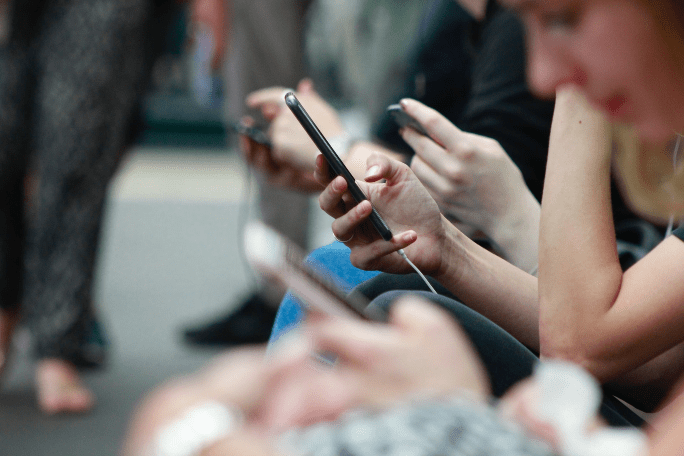What Is Nearsightedness and How Can Glasses Help?
Myopia, also commonly known as nearsightedness, is a vision condition when you can see objects near to you clearly but those that are far away are blurry. As you read on, you’ll learn more about what myopia is, what causes it, as well as how to treat it.
What is nearsightedness (Myopia)?
Nearsightedness (myopia) is a refractive error. That’s when the light that enters your eye does not focus directly on your retina, resulting in abnormal vision.
More specifically – myopia occurs when the image of a distant object is focused in front of your retina, causing it to look blurry. This can occur because the refractive power of the eye is too strong, or the eyeball axis is too long.
Here’s a quick clip from the American Academy of Ophthalmology to explain:
Myopia is a fairly common vision issue across the globe. In fact, studies show that 41.6% of Americans are nearsighted. What’s worse is that by the year 2050, it is predicted that 50% of the global population will be nearsighted.
Aside from myopia, other common refractive errors include:
- Hyperopia (farsightedness)
- Presbyopia
- Astigmatism
Causes and risk factors of nearsightedness
With such a high prevalence of myopia (nearsightedness), it makes you wonder – “what causes it?”
The truth is, there are a variety of causes and risk factors that affect myopia. These risks are why there has been an increase in myopic people over the years.
Myopia can be caused by genetics. If one or both of your parents are nearsighted, then you’re more likely to develop myopia. Research has found approximately 40 genes that are linked to nearsightedness.
Another major risk factor for myopia is spending too little time outside. Studies have shown that more time spent playing outdoors reduces your chances of becoming nearsighted. In addition to this, it also slows the progress of your existing nearsightedness. It is suggested that this is due to the levels of light outside.
Lastly, spending a lot of time with your eyes focused on nearby objects can lead to myopia. This happens when you spend too much time reading or using your tablets, phones, or computers.
If you do a lot of close work, you may experience what is known as pseudomyopia.
This is when your distance vision is blurred because you’ve spent excessive time focusing on something. Due to this, it is difficult for your eyes to focus on objects in the distance. Typically, your vision is returned to normal after resting your eyes.
How can you know if you’re nearsighted?
While Myopia is usually diagnosed in childhood, there are cases of adult-onset myopia due to diabetes or visual stress. Studies have shown that approximately 10 – 50% of myopia develops in adulthood.
There are several symptoms of myopia. One of the most common symptoms is squinting. If you notice you’re squinting to see something clearly in the distance, such as a road sign, the aisle signs in the supermarket or a friend calling out to you from a distance, then you might be nearsighted.
Besides squinting, constantly holding your books, phone, or other objects close to your face just so you can see them clearly is another sign of myopia. Children with myopia also often sit very close to the TV to see it clearly.
Many people with untreated myopia also typically have frequent headaches due to straining their eyes to see clearly.
If you notice any of these symptoms in yourself, or a loved one, schedule an eye exam as soon as possible.
What do nearsighted glasses do?
One of the most common treatments for myopia is the use of glasses. These glasses have prescription lenses that correct your vision and allow you to see clearly. How it works is that the lens bends the light that’s entering your eye so that it focuses properly and hits your retina. This turns a blurry image into a clear one.
A common type of lens used in nearsighted glasses is the concave lens. These lenses are thinnest at the center while being thicker at their edges. Another name for concave lenses is minus lenses/minus power lenses because they decrease the eye’s focusing power.
By doing this, the minus lenses shift the focus of the light in a myopic eye from in front of the retina backward, so it falls directly on the retina. The result – clear vision.
For a visual explanation, here’s a quick clip explaining how concave lenses work to correct your vision:
A type of prescription lens many people use in their glasses is photochromic/transition lenses. These lenses turn dark when you’re outside, in reaction to UV rays, and turn back clear when you’re inside. They also help to protect your eyes from harmful UV rays too.
Talk to your doctor about transition lenses to see if they’re right for you.
There are also variations in the lenses used for nearsighted people. Single vision (monofocal) lenses are the most common type of lens that people wear to correct their field of vision. This is because the entire lens has the same prescription.
However, there are people who are both near and farsighted (presbyopia). These people need multifocal lenses, which offer varying prescriptions to correct their vision as necessary. There are several types of multifocal lenses:
Other ways myopia may be treated
Besides glasses, there are several other ways to treat myopia. Contact lenses are another common treatment for myopia. Many people alternate between their glasses and contact lenses, depending on the occasion.
Contact lenses offer more versatility than glasses, however, they also have their own drawbacks. Check out our article on contacts vs glasses for more details.
Besides contact lenses, another form of treatment for Myopia is refractive surgery, also known as laser eye surgery. Laser eye surgery is when your eye surgeon uses a laser beam to fix your cornea, which results in improved vision.
There are three types of refractive surgery:
- Laser in situ keratomileusis (LASIK)your eye surgeon creates a thin, hinged flap into your cornea. Afterward, they use a laser to remove the inner layers of your cornea. Recovery time from LASIK surgery is quicker and more comfortable than PRK.
- Laser epithelial keratomileusis (LASEK)this is when your surgeon makes an ultra-thin flap only in your cornea’s outer protective cover (epithelium). Next, they use the laser to correct your cornea’s outer layers and replace its epithelium.
- Photorefractive keratectomy (PRK)this is when your eye’s epithelium is completely removed. Afterward, a laser is used to remove the tissue and reshape your cornea. The epithelium, which grows back naturally, then grows to fit your eye’s new shape. This surgery is deemed the safest among the three.
Another treatment for myopia is increased time outside, especially during your childhood, adolescence, and early adult years. This is because increased time outside may slow down the progression of myopia.
Other possible treatments also include:
Wrap up: understanding nearsightedness
As you can see, myopia is a serious issue, and a growing one at that. With 50% of the world’s population expected to be myopic to some degree by 2050, it’s important that you do as much as you can to care for your eyes and those of your children.
Myopia affects us all, young and old, so if you haven’t already, schedule an appointment with an eye care professional to see what you can do to protect your vision.

Written by:
Orane Ennis

Reviewed by:
Dr. Melody Huang













